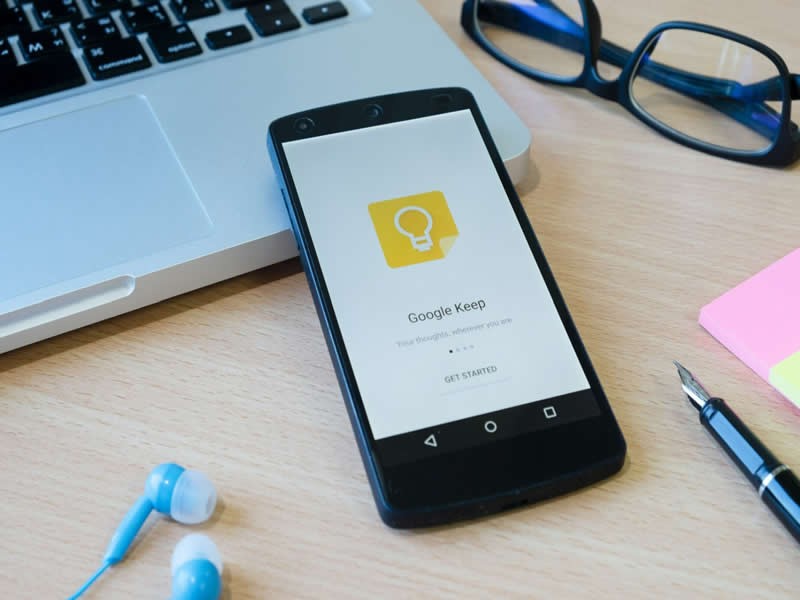Insight Blog
Agility’s perspectives on transforming the employee's experience throughout remote transformation using connected enterprise tools.
8 minutes reading time
(1524 words)
Push Notifications in Finance Apps: Empowering Smart Money Management
A push notification is a message sent to a user through an app when it is locked. Some of the most common push notifications are for text messages and operating system alerts.
The digital age is revolutionizing how financial institutions interact with their customers.
With the widespread adoption of smart devices in everyday life, modern consumers are increasingly seeking greater control over their daily finances. Consequently, their demands for real-time information about their money are on the rise.
Financial institutions can fulfill these expectations by using mobile apps to send push notifications that go beyond simple balance and transaction updates.
The timely delivery of actionable alerts has the potential to enhance digital banking engagement and establish financial institutions as trusted partners.
Those institutions that develop a comprehensive alert strategy are positioning themselves to establish crucial rapport with their customers.
Smartphones have become an essential tool for consumers, providing instant access to a wealth of information with just a few taps on the screen. This abundance of readily available information presents both opportunities and challenges for financial institutions.
On one hand, real-time communication with customers offers an excellent chance to continually strengthen relationships.
On the other hand, today's digital consumers are constantly inundated with various messages, from Facebook likes to LinkedIn updates and text messages confirming dinner reservations.
Cutting through this clutter to deliver valuable financial alerts can be a daunting task. However, research indicates that with the right alert strategy, financial institutions can effectively increase engagement, reduce exposure to fraud, and boost revenue.
By providing updates and engaging users, push notifications to assist in staying on top of finances and making choices.
What are push notifications?
Are you wondering, "What is push notification?" Push notifications are messages or alerts that are sent to a user's mobile device or computer even when they are not actively using an app or website.
These notifications "push" information to the user in real-time, typically appearing as pop-up messages, banners, or badges on the device's screen.
They are a valuable tool for communication and engagement, often used by businesses and organizations, including financial institutions, to keep users informed and engaged.
Are Push Notification the New Communication Method
A comprehensive alert strategy empowers financial institutions to assist consumers in monitoring and managing their finances conveniently, anytime and anywhere.
According to the Javelin Strategy & Research Advisory Services Report titled "Push Notifications Change the Game for Financial Alerts," push notifications are poised to play a central role in consumers' lives over the next five years, with more than half of online consumers expected to receive financial alerts by 2019.
In late 2015, an online survey in the United States, targeting both consumers and small business owners to gain insights into their perspectives on alerts. The consumer participants in this study were a diverse group, comprising individuals aged 18 or older, each holding at least one account with a financial institution.
The study involved 600 consumers, carefully selected to reflect a balanced demographic representation by age, gender, and income. Additionally, six focus groups, featuring participants with similar demographics, were convened.
For the small business segment, the study encompassed 300 small businesses generating revenues ranging from $100,000 to $999,000. These businesses had been in operation for a minimum of two years and had conducted at least some business transactions using a company account.
This comprehensive research on consumers and small businesses delved into various aspects, including:
What are the different types of push messages?
Different types of push messages are available based on the platforms used for customer engagement. Each type possesses its own strengths and recommended practices, but the key elements of highly personalized messages and valuable content should always be a priority.
Web Push Messages
These messages are displayed on a website's desktop or mobile version. They are commonly employed to encourage users to subscribe to an email list. Additionally, they serve as effective tools for informing users about ongoing sales and special offers.
Support Pushes
Support push notifications are gaining popularity rapidly. They facilitate connections between users and live support or chatbots, addressing a wide range of inquiries such as order status, shipping questions, and more.
Desktop Push Notifications
Desktop push notifications are sent by the operating system or installed applications on a computer. They can serve as appointment reminders, deliver upgrade information, or promote new features and products.
Mobile App Push Message
Push notifications sent by mobile apps are among the most versatile and potent notification types. Through a mobile app, businesses can send messages to users covering various topics, including order status, special promotions, upcoming appointments, fraud alerts, and much more.
SMS Push Notifications
SMS push notifications are alerts that devices send to inform users of new text messages in their inbox. These notifications have limited customization options, as the appearance is controlled by the device's operating system.
Wearable Notifications
Wearable notifications are sent by apps to devices like smartwatches. They are particularly valuable for health-related apps and location-specific notifications for stores.
How do push notifications empower management?
Follow us and access great exclusive content everyday: Follow us on Google News
1. Real-time updates on financial transactions
Finance apps with push notifications ensure users stay updated about their real-time transactions. Whether it's a message informing you about a purchase, the arrival of your paycheck, or a withdrawal from your account, you'll be instantly notified of any changes to your situation. This real-time transparency empowers you to identify suspicious activities and take action, if necessary, quickly. For institutions looking to enhance their digital offerings, partnering with a provider of financial software development services can ensure the delivery of innovative and secure financial solutions that meet the evolving needs of customers
2. Timely reminders for bill payments
One of the challenges in managing finances is keeping track of bill payments. Late payments can lead to fees, penalties, and potential harm to your credit score. Push notifications can help address this challenge by serving as reminders for bill payments. You can set up alerts for dates, which will help you stay on top of your responsibilities and avoid unnecessary expenses or negative consequences.
3. Notifications regarding budget limits and overspending
Maintaining a budget is vital for ensuring stability. Push notifications can be customized to warn when you're approaching or surpassing your spending limits. By receiving alerts whenever you overspend, you can make choices about your purchases and prevent excessive spending. This proactive approach to budgeting assists individuals in maintaining discipline and reaching their objectives.
4. Updates on investments and market trends
For those investing, push notifications can deliver updates on their investment portfolios.
Users can stay informed about stock prices, market trends, updates on company performance, and other significant developments that could impact their investments. This valuable information enables investors to make timed decisions and seize market opportunities while minimizing risks.
5. Tailored financial guidance and suggestions
Finance apps can utilize notifications to offer personalized guidance and tips based on users' specific financial objectives, spending patterns, and financial history. These notifications can provide insights on increasing savings, reducing debt, enhancing credit scores, or making investment decisions. By receiving recommendations, users are empowered to make informed choices regarding their finances and take actions toward improving their overall financial well-being.
6. Updates on savings goals and progress
Numerous finance apps provide features that assist users in setting savings goals and tracking their progress. Push notifications play a role in keeping users motivated and engaged in pursuing these goals. Regular updates and reminders about their savings progress encourage users to remain dedicated to achieving their objectives while making any adjustments along the way.
7. Alerts for fraud protection and security measures
The risk of fraudulence and security breaches is a concern in today's landscape. Push notifications have become incredibly valuable in security as they can promptly notify users about activities like logins or fraudulent transactions. This immediate awareness empowers individuals to take action, such as freezing their accounts, changing passwords or contacting their institutions to prevent further harm.
Free ebook: How To Get Your Intranet Off The Ground
Wrapping up
Presently, push notifications primarily originate from a financial institution's account processing system. Unusual activities, such as substantial withdrawals or unexpected payments, trigger alerts to customers, prompting verification and corrective action if necessary.
However, what lies ahead for push notifications?
The future envisions a realm of possibilities to enhance and expand the relationship between the institution and the customer. Picture the potential that arises from integrating the alerting platform with lending, credit, or investment services. This integration opens avenues for meaningful conversations, such as: "You've recently deposited a significant amount into your savings account. Would you like to explore our mutual funds portfolio bundle for better rates?" Or, "Your car lease expires in three months. It might be time to discuss our new lease rates with us. Tap here for more information."
This elevated level of engagement not only fosters trust with customers but also presents fresh revenue-generating opportunities for the institution.
Categories
Blog
(2563)
Business Management
(314)
Employee Engagement
(204)
Digital Transformation
(171)
Intranets
(119)
Growth
(114)
Remote Work
(61)
Sales
(48)
Collaboration
(37)
Culture
(29)
Project management
(29)
Customer Experience
(25)
Knowledge Management
(21)
Leadership
(20)
Comparisons
(5)
Ready to learn more? 👍
One platform to optimize, manage and track all of your teams. Your new digital workplace is a click away. 🚀
Free for 14 days, no credit card required.














